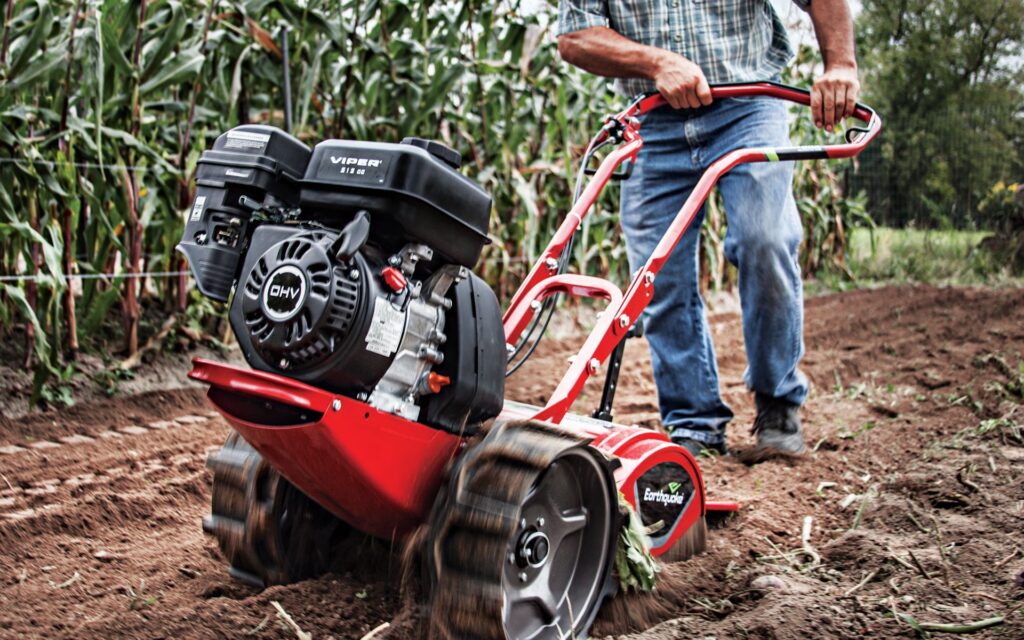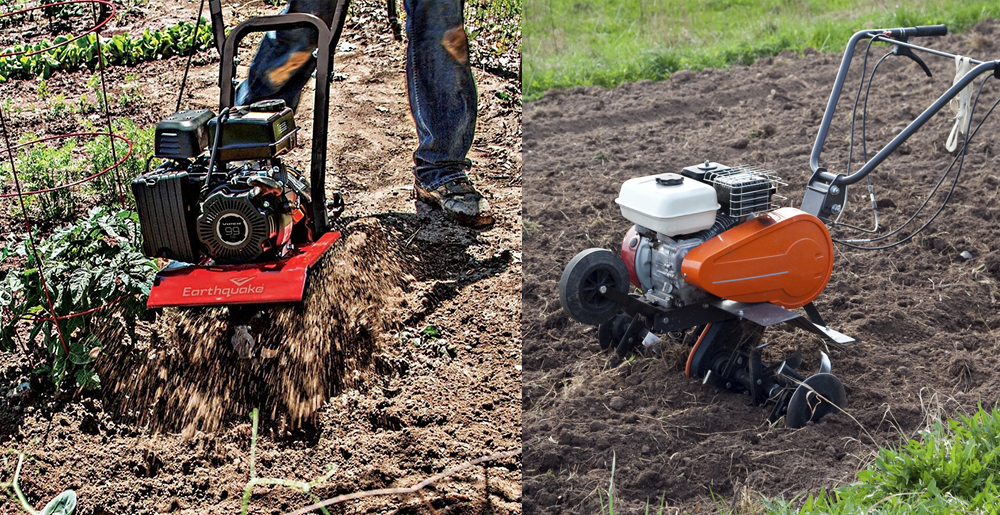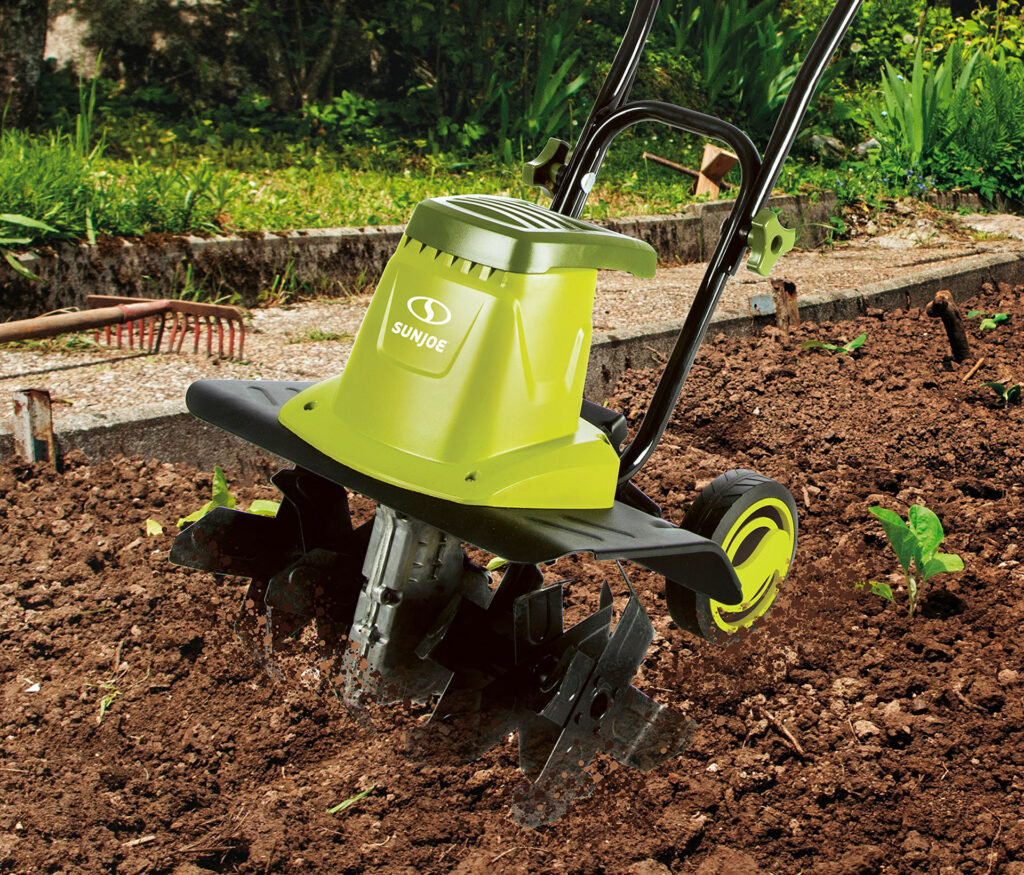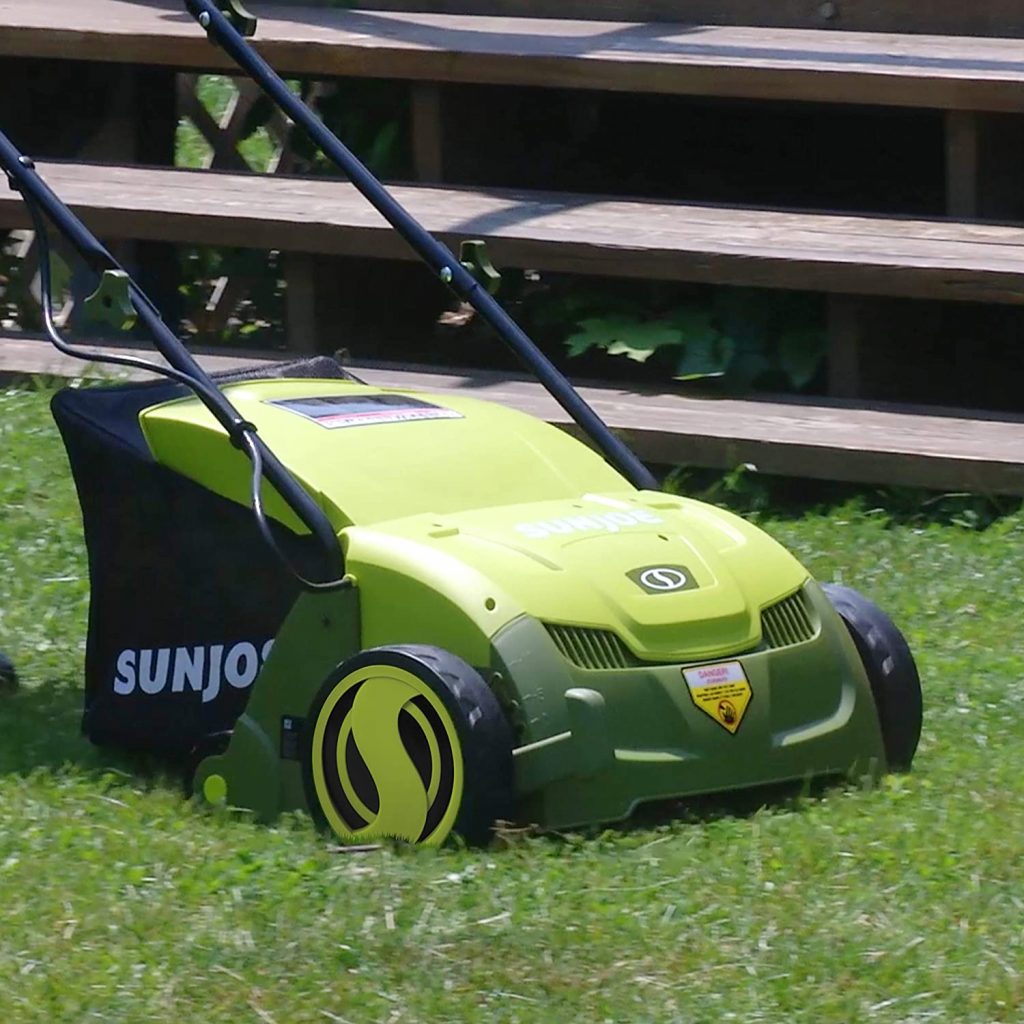
What more can you dream of than the best tools to cultivate the land like tillers?
The best tillers can break hard ground, considerably boosting your overall gardening experience. They offer the right amount of power to cultivate hard ground. And you can choose from several types.
However, the first step to getting a good tiller is to understand the available types in the market.
Well, the best ones should properly break ground and mix the soil exhaustively. Once you’ve known tillers, you should look at the vital elements worth paying attention to when choosing the best tillers.
Experts add that these machines are meant to get work done fast and with little energy.
Well, in this guide, we will walk you through everything you should know about them.
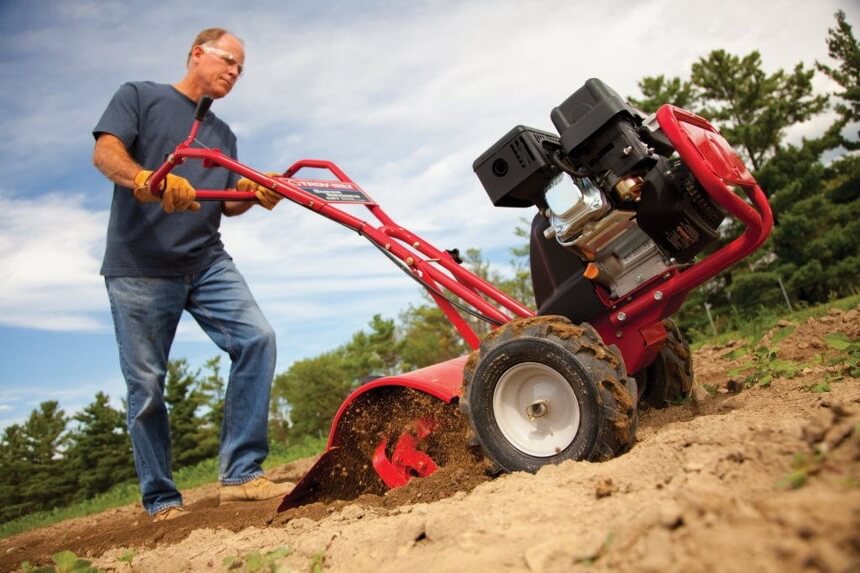
Notably, tillers also perform the task of aerating the soil by widening the pores. This takes place during the groundbreaking process.
The machines create conducive surfaces that allow plants to thrive. Every gardener acknowledges the fact that plants require specific environmental conditions to grow. Soil is the major contributor to plants’ healthy growth; tillers enhance the fertility of soil through their preciseness when operating. You’ll break your soil in a way that facilitates the growth of your plant’s roots.
Overall, tillers offer the most comfortable and suitable method of tilling the ground due to their smooth operation and convenient nature.
There are lots of benefits of tilling land Trusted Source Tilling Advantages Vs. No-Till Advantages - Gardening Blog The benefits of a no-till garden are numerous. If you want healthier soil, less erosion and runoff, reduced reliance on fertilizers, and a big chunk of free time, stop tilling your garden. A no-till garden will save you time, energy, and money, and will promote better plant growth too. Tilling soil also has its benefits. It changes the soil’s porosity and texture, incorporates organic matter quickly, and helps plants establish full root systems quickly. There is quite a discussion going on as to whether tilling has downsides and that is inarguably true. However, the benefits of tillage may outweigh the disadvantages. Some reasons to till may help balance the argument and help you decide which method is right for your garden. blog.gardeningknowhow.com and tillers come in handy to smoothen the process.
Gardeners prefer to use these machines as they are easier to operate than traditional methods of cultivating land, which is tiresome and not very effective.
Once you start a tiller, you are set to go. The majority of them come with a manual that vividly elaborates the procedures of use. You will notice that it’s a straightforward process.
Additionally, these machines are safe to use and easy to maintain. You will rarely find the use of tillers posing threats to your physical health.
They do not cause bodily injury whatsoever. But we recommend you know how to use them before operation.
If it’s your first time using a tiller, be careful and till the land gently. It is advisable to wear protective gear, notably the right eye gears and strong boots.
We also love that tillers require little maintenance. You’ll only have to clean them before use and perform regular checks to spot defective parts and fix them promptly.
There are several types of tillers in the market.
Once you do your research on the different types of tillers, you should be well capable of determining your best fit.
Garden tillers are common, considering they are convenient for small areas. And if you own a small piece of land, you’ll have several options to choose from.
Lawn tillers are also suitable for homeowners. The types of lawn tillers also vary, from those with low power to the powerful ones that dig hard grounds.
Overall, you should know the different types of tillers, and the good news is we’ll discuss the common ones below.
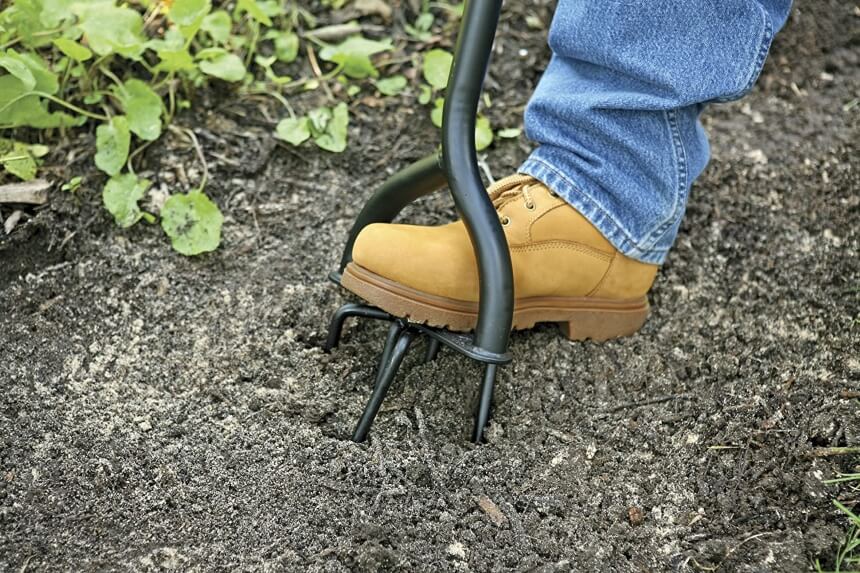
Well, manual tillers have three main parts: a handle, bladed wheel, and spikes of prongs which are straightforward to use.
You’ll only have to hold the handle and till the ground. Notably, their long handles are relatively easy to hold and make it easy to till the land without the hassle of bending or kneeling.
If you own a manual tiller, ensure the bladed wheels are sharp so that you ease the process of tilling your land.
Experts also feel like the spikes and prongs must also be regularly sharpened to maintain your machine’s tilling power.
Overall, the three parts operate cohesively. As the spikes dig the soil, the wheel churns it. It is important to note that some manual tillers lack bladed wheels. They resemble gardening forks and operate almost similarly.
Most manual tillers are ideal for loosening hard soil, removing weeds, and mixing fertilizers into the ground.
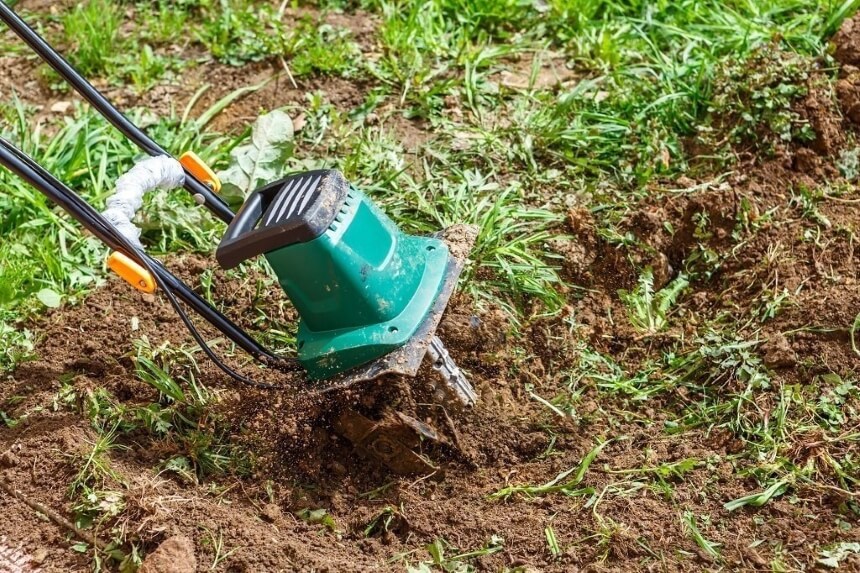
Many people do not know how to differentiate cultivators and tillers.
These machines are not as powerful as tillers in the sense that they can’t break ground as efficiently as tillers.
Additionally, their designs don’t allow heavy groundbreaking or separating soil. They are designed to maintain healthy gardens during different seasons.
Furthermore, cultivators are more efficient in churning soil than tillers as tillers break the soil. So, we recommend you use a tiller first, and once the ground is sufficiently broken, use a cultivator to mix the ground and prepare for planting season.
Cultivators are used to add compost, aerate the soil prior to planting grasses Trusted Source Tillering in grasses - Its significance and control - ResearchGate Tillering is examined in relation to the morphology and habit of growth of the perennial herbage grasses; particular reference is made to the effects of cutting and grazing. The importance of tillering in establishment and regeneration or perennation of a grass sward is considered; greater importance is attached to the role of tillers in the regrowth of swards cut for conservation at the reproductive stage of growth. Amounts of regrowth are related to both the number and size of vegetative tillers present at the base of reproductive tillers at the time of cutting. www.researchgate.net , and control the growth of weeds.
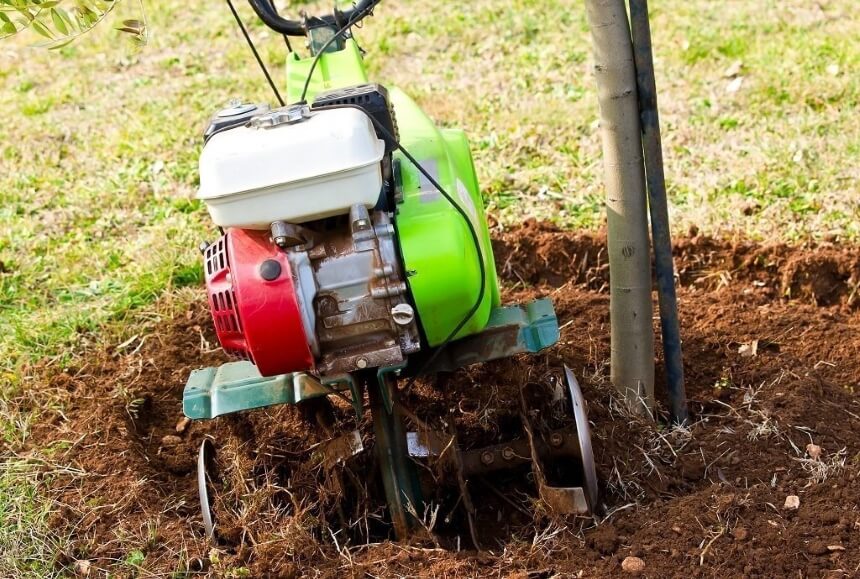
They are useful in maintaining gardens through weeding, compositing, and soil preparation.
However, compared with other tillers, these designs offer limited functionalities.
Front tine tillers have an adjustable tine width. Notably, most front tine tillers offer three width settings, allowing the adjustment of tilling spacings depending on the soil type. They allow spaces ranging from small gaps to those that extend to two feet. Additionally, these types of tillers have wheels at the back, meaning you can turn and reverse them easily.
Front line tillers suit cultivating small to medium-sized gardens. They are adept at loosening the soil and fast at breaking firm ground. You can also use them for weeding and maintaining your garden.
According to experts, the best front tine tiller is the Yardmax YT5328 Compact Front Tine Tiller, 98cc. It has an engine that delivers 180-RPM rotational speed and an adjustable handle. Additionally, the tiller depth control makes it easy to smoothen the tilling process.
First-time gardeners might find it hard differentiating between mid-tine tillers and front-tine tillers.
These two machines fall in the same category yet come with different designs.
To spot the difference, check the position of the ties. If you find them underneath the engine, then that’s a mid-tine tiller.
Mid tine tillers offer good balance compared to front tine tillers. You might consider them an upgraded version of tine tillers when it comes to balancing. They also allow shallow weeding in medium-size gardens, saving you the energy of doing the small chore.
Experts say that when it comes to tilling rugged land, you should consider using mid-tine tillers compared to their counterparts. They also allow shallow weeding in medium-size gardens, saving you the energy of doing the small chore.
Additionally, mid-tine tillers are more affordable than front-tine tillers. It’s rare to find such a fantastic design for reasonable rates. Some may be expensive due to the position of their tines. And experts say that such a convenience must come at a cost.
Another awesome thing is, mid-tine tillers have several capabilities. Their tines are quite instrumental in loosening soil, and that’s why most gardeners who want uniform tilling prefer using this machine. They loosen the ground uniformly.
Notably, most mid-tine tillers come in handy for digging home gardens and giving them a professional look. You can also use these machines to prepare your seedbeds with rotary tillers. As a gardener, you should develop an understanding of rotary tillers when it comes to seedbed preparation.
We have several types of rotary tillers that also offer a great gardening experience.
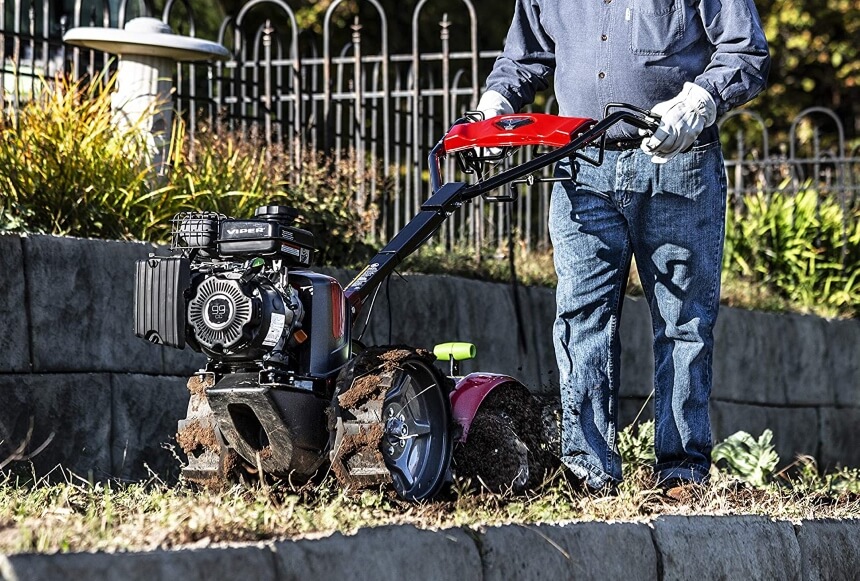
Their sizes are conveniently large, making them ideal for tilling large areas, and that’s why most gardeners with vast pieces of land prefer this tool.
Additionally, rear tine tillers come in handy for digging small plots. They have large wheels and a comfortable handle that allows a firm grip.
However, rear tine tillers are more challenging to maneuver than front tine tillers. Therefore, you should expect to experience challenges steering and pushing the machine during your first gardening sessions.
As you get used to it, gardening will be a lot easier. Furthermore, the weight of the machine gives it more power.
According to gardening experts, the best type of rear tine tiller is the Earthquake 31285 Pioneer Dual-Direction Rear Tiller. The stability of this machine is excellent. It also has instant reverse and airless wheels plus dual grip handlebars. Overall, you should consider using this machine to till hard ground. Also, rear tine tillers are commonly used for breaking firm ground, loosening hard soil, and digging extensive gardens.
As much as these tillers are not easy to maneuver, they are easy to use as the tines and the wheels work independently.
The wheels propel the machine forward while the tines work their magic on the ground. Furthermore, rear tine tillers offer the convenience of tilling at desired depths. Their big wheels balance the machine and allow uniform tilling.
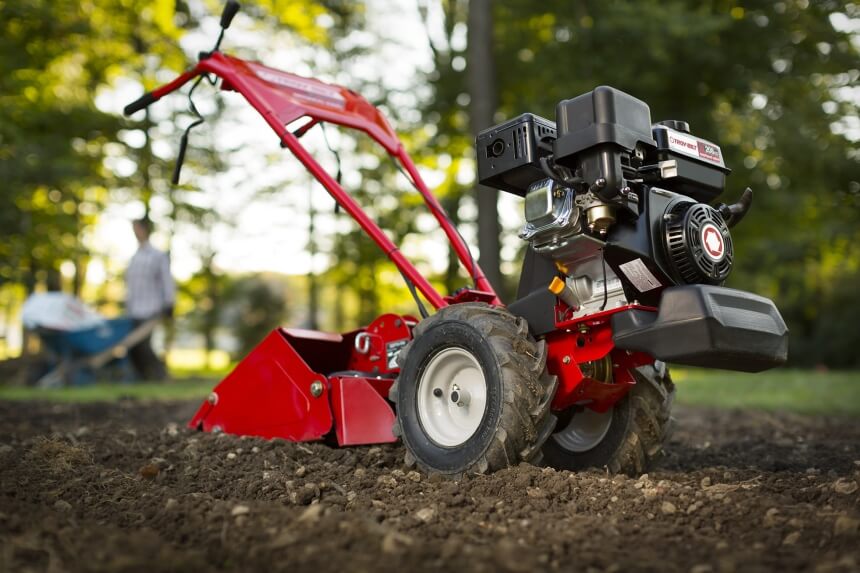
They are slowly finding their way into the market, already being bought due to their unique tilling capabilities.
Notably, these types of tillers do not cut the soil in the same way as front and rear-tine tillers.
As the name suggests, they cut vertically. Other kinds of tillers cut in a downward trend. They also have a great design that makes them more comfortable and faster. Hence, less effort is required when handling the machines.
Although new in the market, vertical tine tillers are gaining much publicity for their efficient means of operation. These types of tillers are useful for breaking new gardens. Therefore, if you’re new to gardening, you can consider trying it out.
The ground should not be so rough as these tillers are not as big as rear tine tillers. They are also convenient for plowing soil in gardens that have not been used for short periods; tilling existing gardens is among its core functionalities.
Like other types of tillers, we recommend vertical tine tillers for loosening soil and preparing seedbeds.
There are several other things that you must consider when purchasing a tiller.
You want the best machines that perform tasks correctly; value for your money is the number one priority when buying farm equipment.
Therefore, you must inspect tillers for functionality and avoid making mistakes. Take into consideration all the fundamental issues you want to solve in your garden.
Whether it’s small or larger gardens, the best tillers will do the job in the right way. As a gardener, you should know what you should do and how to do it and then purchase the best machine.
Here are other factors to pay attention:
The type of soil in your garden matters. If your soil is tough or rocky for the matter, then purchasing a big powerful tiler will be helpful.
Big tillers work well even in small gardens, not just in larger ones. Should you buy a mini tiller for a hard surface, you won’t achieve optimum results now that mini tillers are suitable for soft grounds.
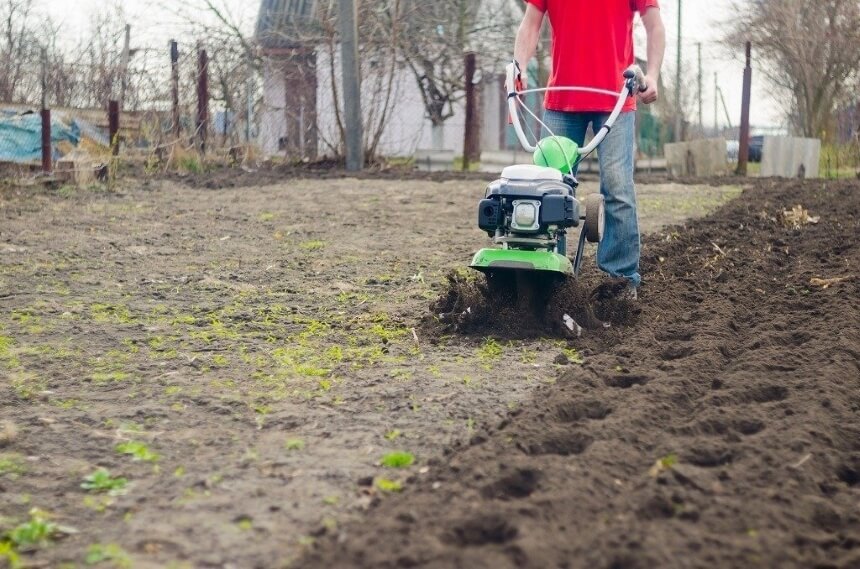
As previously mentioned, large tillers are for huge farms. Rear tine tillers are excellent for such farms. They break down the soil uniformly and leave the ground softer than they found it.
It is also important to note that tillers that have above 6HP are best for large gardens. Such power is sufficient for breaking down large particles of soil.
Furthermore, it would be best if you consider using tillers with 5HP to perform on medium-size grounds.
Combine this criterion of choice with other measures and achieve the best results.
Considering the tilling width and depth will help you choose a machine that maximizes its power.
Tillers with high efficiency dig deeper and broader. And these are mainly large tillers with optimal power.
However, if you want light digging in your small or medium-sized garden, purchase a small tiller and save the extra cost.
Experts add that tilling width and depth come in handy when purchasing tillers that match the size of your land so that you do your work fast. Keep in mind that high efficiency means the right power for the task.
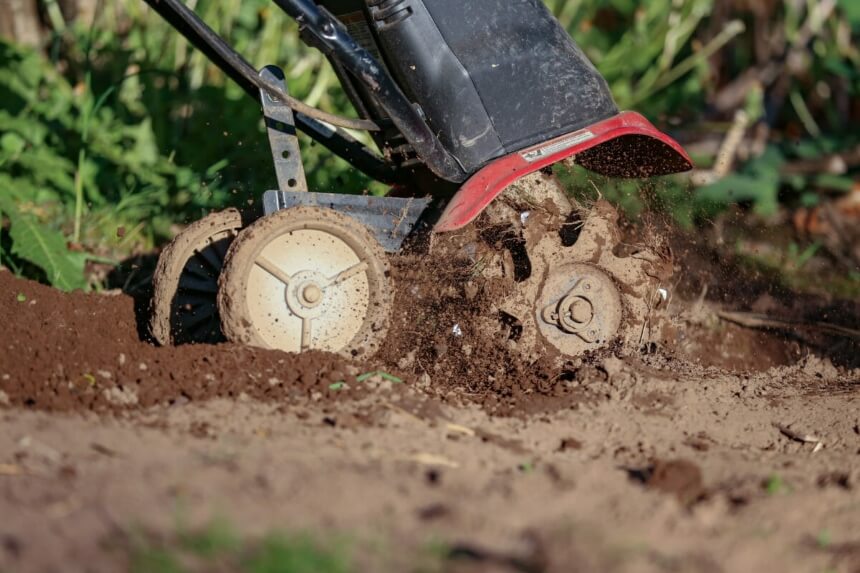
Manual tillers work best for light digging, and they suit gardeners who handle small tasks. Additionally, these tillers are only suitable for soft grounds that require light finishing. They are also useful in mixing soil and seeding. However, most manual tillers cannot handle heavy jobs like tilling large farms.
On the other hand, electric tillers are best for hard soil. They break up the particles into small parts in the least time possible. The best part is electric tillers reduce the effort you require to till your land.
Among the first things that you should check when buying a tiller is the engine of the machine.
Gardeners with small or medium-size gardens opt for tillers with relatively low horsepower. They save energy and are affordable yet complete tasks easily. New tillers also come with new engines. All you need to do is make regular maintenance afterward.
Large farms require powerful tillers with high horsepower. Therefore, choose tillers with the biggest engines when seeking to till such farms. These machines have the power to drive through the ground and cut it deep. You won’t see that with small-engine tillers.
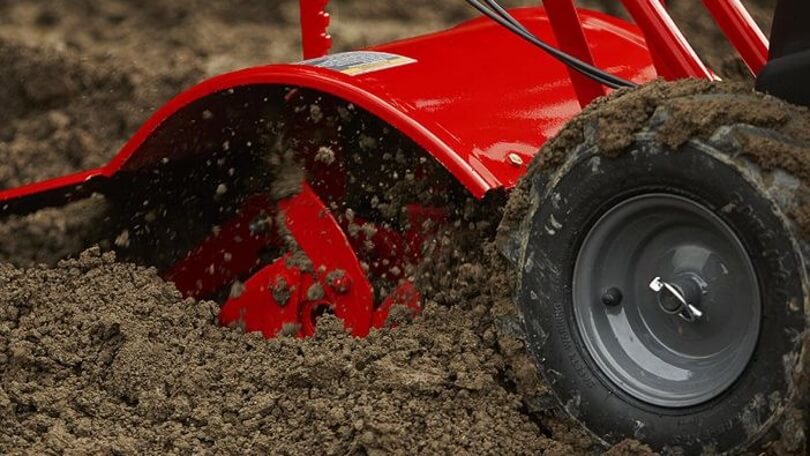
All large tillers have big tires to maneuver around rigid land. These tires are especially adapted to step in large chunks of soil. Hence, you will find it easy tilling large farms without worrying about tripping.
The wheels also offer the right traction for tilling hard ground.
On the other hand, small tillers have smaller wheels. However, this doesn’t mean they don’t provide full functionality. Well, they are tailored to most small and medium-sized gardens.
Next, consider if your tiller is portable for the best gardening experience.
Most manual tillers are heavy though usually portable. Hence, gardeners find them convenient when making small adjustments around their gardens.
You can store a manual tiller almost anywhere and easily pick them and begin your tilling wherever and whenever.
On the other hand, large tillers are less portable than small tillers. Therefore, you should store them in secluded areas and remove them only when needed.
As expected, large tillers must be transported to outlying areas that farmers wish to till. That might be the only disadvantage they have over small tillers.
Safety precautions are vital when handling tillers, especially bigger ones.
When purchasing a tiller, you should consider if it’s safe to use or not.
Tillers come with a manual with several safety tips and the best ways you should use the machines.
Before you begin tilling, take your time and go through the tips.
Small tillers are much easier to handle and offer much safety. Considering that they have limited capabilities, they are easy to control.
However, you should be careful when handling big tillers. Those with high HP can be hard to control, especially for first-timers.
We also recommend you scrutinize the type of starters before you settle for any garden tillers.
Starters are a crucial part of electronic tillers. Considering the kind of starters in tillers, you’ll either have a hard or easy time operating it.
Well, we have a variety of starters to choose from in the market according to your needs.
You may want to look for the extra features before choosing the best tiller. Scrutinize the components and acquire one that has advanced capabilities. The more advanced a tiller is, the better.
Tillers are useful tools for breaking soil in small gardens and large farms.
These machines have several benefits, from easing the land-tilling process to efficiency in gardening.
Notably, there are several types of tillers in the market, and you should ensure you firmly grasp each one so that you get the best model that suits specific activities.
For small budgets, you might consider manual tillers.
However, if you want the machine’s full power, purchase a larger one, considerably rare tine tillers.
As discussed, you should go further and consider other factors when selecting the best tillers out there. They will offer the best cultivating experience any gardener would wish.
